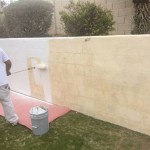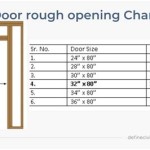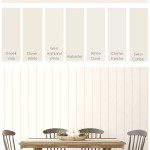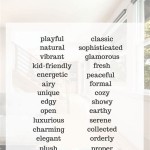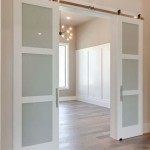Which is the Best Interior Wall Paint: A Comprehensive Guide
Choosing the right interior wall paint can significantly impact the overall aesthetic and atmosphere of a space. Beyond simply adding color, the selection of paint influences factors such as durability, cleanability, light reflection, and even air quality. The sheer variety of paints available on the market makes navigating the options a complex undertaking. This article dissects the key considerations for selecting the optimal interior wall paint, examining different paint types, finishes, and crucial performance characteristics.
Understanding the Different Types of Interior Wall Paint
Interior wall paints primarily consist of pigments, binders, solvents, and additives. The specific formulation of these components determines the paint's properties and suitability for various applications. Broadly, interior paints are categorized into several main types, each with its distinct advantages and disadvantages.
Latex Paints: Latex paints, also known as acrylic latex paints, are water-based and represent the most popular choice for interior walls. They are prized for their ease of application, low odor, quick drying time, and excellent durability. Latex paints offer good color retention and resistance to cracking and peeling. Moreover, they are relatively environmentally friendly compared to oil-based alternatives, as they emit fewer volatile organic compounds (VOCs). Latex paints are easily cleaned with soap and water, making them ideal for high-traffic areas like living rooms, bedrooms, and hallways. The acrylic component in latex paints provides added adhesion and durability, making them suitable for a wide range of surfaces including drywall, plaster, and wood.
Alkyd Paints: Alkyd paints, or oil-based paints, were traditionally favored for their exceptional durability and smooth, enamel-like finish. However, they have largely been superseded by latex paints due to concerns about VOC emissions and application difficulties. Alkyd paints require mineral spirits or paint thinner for cleanup, and they release strong odors during application and drying. They are also more prone to yellowing over time, particularly in areas with limited natural light. Despite these drawbacks, alkyd paints remain a viable option for trim and doors, where a hard, durable finish is required. Their superior leveling properties result in a smoother final appearance compared to latex paints.
Acrylic Paints: While often used interchangeably with latex paints, acrylic paints are technically a subset of latex paints. Acrylic paints contain a higher concentration of acrylic resins, which enhances their adhesion, flexibility, and resistance to cracking and fading. They are particularly well-suited for areas prone to humidity and temperature fluctuations, such as bathrooms and kitchens. Acrylic paints also offer excellent stain resistance, making them a practical choice for homes with children or pets. They are generally more expensive than standard latex paints but offer superior performance characteristics in demanding environments.
Specialty Paints: Beyond the standard categories, specialty paints cater to specific needs and applications. These include paints with mold and mildew resistance, ideal for bathrooms and basements; zero-VOC paints, which minimize indoor air pollution; and chalkboard paints, which transform walls into writable surfaces. Specialty paints often come with a higher price tag but can provide targeted solutions for particular challenges. For instance, paints with sound-dampening properties can reduce noise transmission in home theaters or apartments.
Navigating the Different Paint Finishes
The finish of a paint refers to its sheen or level of reflectivity. The choice of finish impacts not only the aesthetic appearance of the walls but also their durability and cleanability. Different finishes are better suited for different areas and applications based on their specific properties.
Flat/Matte Finish: Flat or matte finishes have the lowest sheen level, absorbing light and creating a soft, non-reflective surface. They are excellent at concealing imperfections on walls and creating a uniform, understated look. However, flat finishes are the least durable and most difficult to clean. They are best suited for low-traffic areas like bedrooms and ceilings where minimal wiping or scrubbing is required. Flat finishes are also a good choice for walls with significant imperfections, such as textured surfaces or older plaster, as they minimize the visibility of blemishes.
Eggshell Finish: Eggshell finishes have a slight sheen, resembling the surface of an eggshell. They offer a balance between hiding imperfections and providing some degree of durability and cleanability. Eggshell finishes are more washable than flat finishes, making them suitable for living rooms, dining rooms, and hallways. They provide a subtle sheen that adds a touch of elegance without being overly reflective. Eggshell is a versatile choice that works well in most interior spaces.
Satin Finish: Satin finishes have a higher sheen than eggshell, providing a smooth, velvety appearance. They are more durable and easier to clean than eggshell finishes, making them a good option for bathrooms, kitchens, and playrooms. Satin finishes offer good resistance to moisture and staining, making them practical for areas prone to spills and splashes. However, satin finishes can highlight imperfections on walls, so proper surface preparation is crucial. They are a popular choice for trim and doors as well, providing a durable and attractive finish.
Semi-Gloss Finish: Semi-gloss finishes are highly reflective and durable, making them ideal for areas that require frequent cleaning and are subject to high levels of moisture. They are commonly used on trim, doors, cabinets, and bathroom walls. Semi-gloss finishes offer excellent resistance to water, grease, and stains. However, their high sheen can accentuate imperfections, so careful surface preparation is essential. They are also more resistant to mildew growth compared to lower sheen finishes.
High-Gloss Finish: High-gloss finishes have the highest sheen level, creating a shiny, almost mirror-like surface. They are extremely durable and easy to clean, but they also highlight imperfections more than any other finish. High-gloss finishes are typically reserved for trim, doors, and accent pieces where a dramatic, reflective effect is desired. They are also suitable for high-traffic areas that require frequent cleaning, such as kitchens and bathrooms. However, the high sheen can be overwhelming if used on large wall surfaces.
Key Performance Characteristics to Consider
Beyond the type and finish, several key performance characteristics should be evaluated when selecting interior wall paint. These factors impact the long-term performance and durability of the paint, as well as its suitability for specific applications.
Durability and Washability: The durability of a paint refers to its ability to withstand wear and tear, including scratching, scuffing, and fading. Washability refers to the ease with which dirt, stains, and marks can be removed from the painted surface without damaging the finish. Paints with higher durability and washability are essential for high-traffic areas and spaces prone to spills and stains. Latex and acrylic paints generally offer good durability and washability, particularly in satin and semi-gloss finishes. Consider the intended use of the space when determining the required level of durability and washability.
Coverage and Hiding Power: Coverage refers to the area that a given volume of paint can cover, while hiding power refers to the paint's ability to conceal the underlying surface. Paints with good coverage and hiding power require fewer coats to achieve a uniform, opaque finish, saving time and money. High-quality paints typically offer better coverage and hiding power compared to cheaper alternatives. Priming the walls before painting can also improve coverage and hiding power, particularly when painting over dark colors or stained surfaces.
VOC Content: Volatile organic compounds (VOCs) are chemicals that evaporate from paint and can contribute to indoor air pollution. Paints with low or zero VOC content are considered more environmentally friendly and healthier for occupants. They are particularly important for individuals with sensitivities to chemicals or respiratory problems. Many manufacturers now offer low-VOC and zero-VOC paints that perform comparably to traditional paints. Check the paint label for VOC content information before making a purchase.
Color Retention: Color retention refers to the paint's ability to maintain its original color over time without fading or yellowing. Paints with good color retention use high-quality pigments that are resistant to UV light and other environmental factors. Latex and acrylic paints generally offer good color retention compared to alkyd paints, which are more prone to yellowing. Choosing a paint with good color retention can help ensure that the walls maintain their intended appearance for years to come.
Application Properties: The ease of application is another important consideration. Paints that are easy to apply, spread evenly, and level well can save time and effort and result in a smoother, more professional-looking finish. Latex paints are generally easier to apply than alkyd paints, thanks to their water-based formulation and quick drying time. The use of quality brushes and rollers can also significantly improve the application process. Consider the paint's viscosity and drying time when evaluating its application properties.
Ultimately, the best interior wall paint is the one that best meets the specific needs and demands of a particular space, considering factors such as traffic levels, moisture exposure, desired aesthetic, and environmental concerns. Careful consideration of these factors will ensure a successful and long-lasting paint job.

The 5 Best Interior Paint Colors For Feeling Refreshed And Relaxed Metzler Home Builders

Know Which Is The Best Type Of Paint For Interior Walls Berger Blog

From Matte To Gloss Which Paint Finish Is Best For Your Interior Walls Asian Paints

A Guide To Choose The Best Paint For Interior Walls Berger Blog

5 Trending Interior Paint Colors Lowe S

The Best Paint For Your Walls 2024 Interior Wall

Which Type Of Wall Paint Is Best
Which Paint Is Best For Interior Walls Quora

10 Best Trending 2024 Interior Paint Colors To Inspire Décor Aid

Interior Paint Guide The Home Depot
Related Posts

